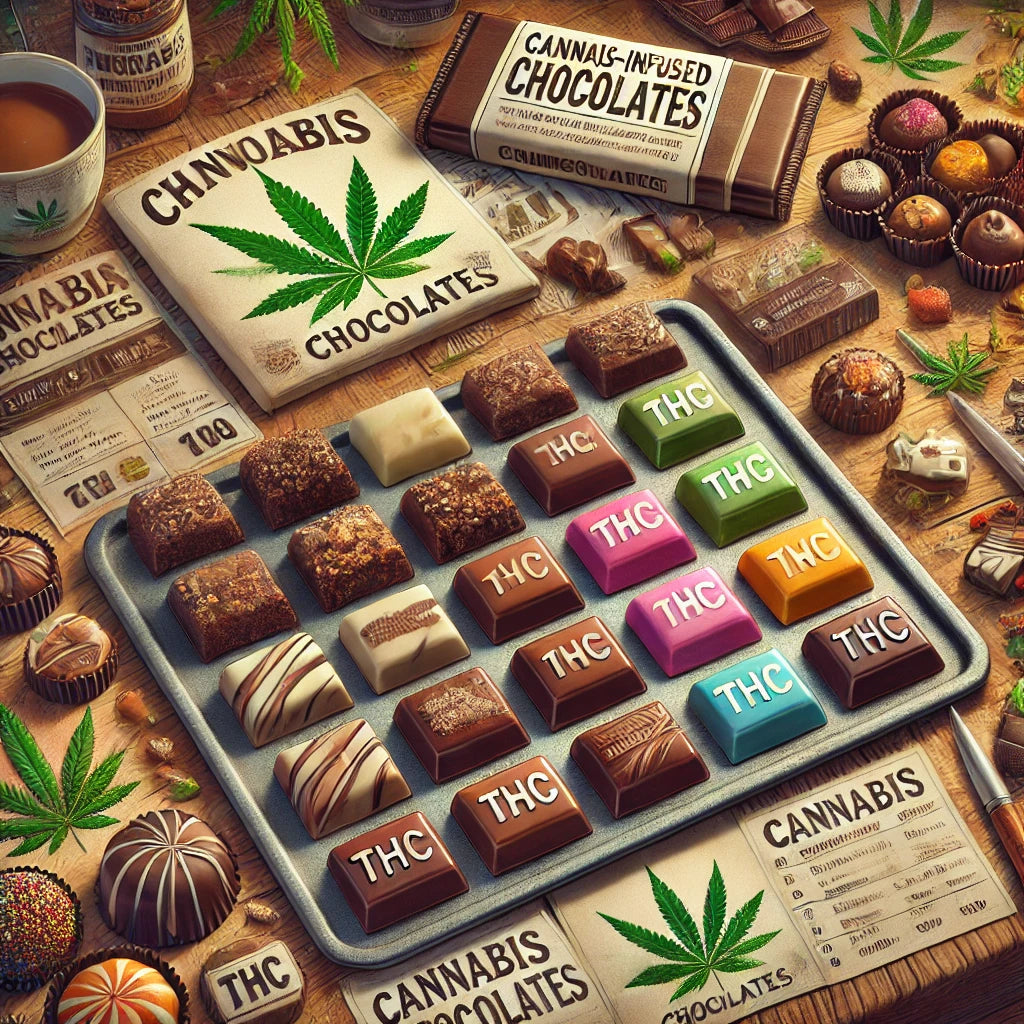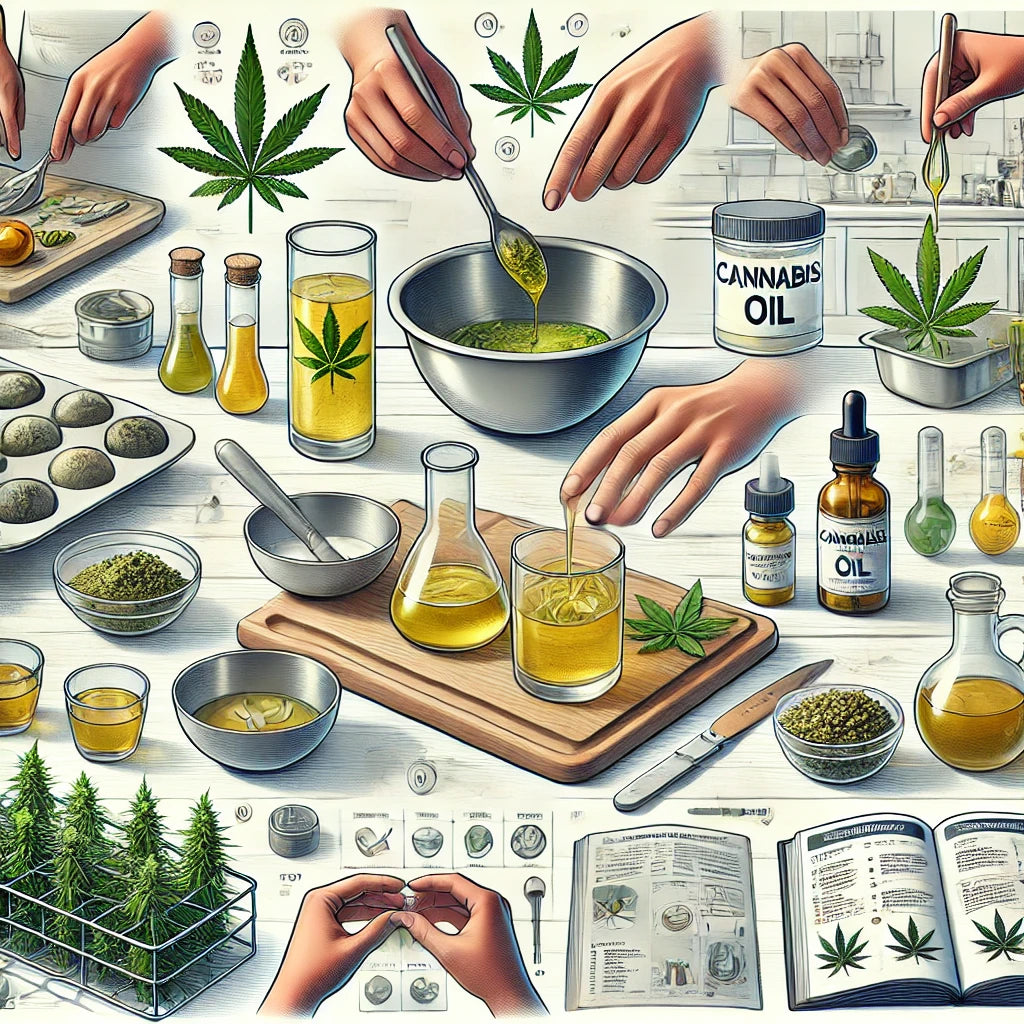Cannabis extracts come in various liquid and solid forms and are produced through either a solvent-based or solvent-less method. Because these products are highly concentrated, they come with particular concerns surrounding potency.
HIGHLIGHTS
- Cannabis extracts, or concentrates, encompass a broad range of products derived from the cannabis plant.
- Extracts can be created through solvent or solvent-less extraction methods.
- Other considerations when purchasing extracts include their potency and the accessories required to use them.
The cannabis plant contains compounds isolated and extracted, including cannabinoids (such as THC) and terpenes. A wide range of extracts (also called concentrates) are available in either liquid or solid form, meant to be ingested or inhaled. Let's take a deep dive into the extraction process and the different products it can produce, as well as considerations around potency.
How Are Extracts Made?
Extracts are created through either a liquid process that requires a solvent (whether a hydrocarbon, such as butane, propane or alcohol) or a solvent-less mechanical process (by washing in ice water, vacuuming, sifting or pressing).
In the solvent process, a liquid (or a gas that has been pressurized until it becomes liquid) is passed through the cannabis flower, dissolving the cannabinoids and terpenes in the trichomes. The enriched solvent is then moved to a spinning machine or a cooling chamber that separates the desired components from the liquid.
Solvent-less extraction is precisely as it sounds; extracts are made without using solvents, so they rely on a mechanical process, such as pressure, heating, cooling or sifting, or a combination of such methods, to separate the materials.
What Forms Do Extracts Come in?
Depending on the process used, the cannabis plant can be produced into several types of extracts. Here are a few of the most well-known.
Distillate: Produced through a solvent extraction process, distillate is a highly concentrated form of cannabis oil used in vaping cartridges. It can also be mixed with a neutral oil, such as MCT or sunflower oil, pre-packaged as an oil, capsule or spray or used for dabbing.
Hash: To create a hash (also called hashish), the trichomes (i.e. the sticky mushroom-shaped glands on the cannabis plant's leaves) are collected from the plant material through various processes, involving ice water and sifting, and then pressed into a brick. The resulting material can be smoked, vaporized or dabbed. Based on the different processes involved, multiple varieties of hash can be produced.
Kief: Like the hash, kief is a powder made up of dried crystal-like trichomes that fall off the cannabis flower. It's sifted using a mechanical process, so solvents are not required. It contains the same cannabinoids and terpenes as the plant it came from. Kief can be smoked or vaped.
Live resin: To produce live resin, the fresh cannabis plant is flash-frozen to lock in its terpenes and flavonoids and keep cold. At the same time, it's processed using a solvent. The resulting material can be used for dabbing.
Rosin: Rosin is an oil full of cannabinoids and terpenes, produced solvent-less by pressing dried cannabis flower between two heated plates.
Shatter: The process for making shatter, a solid glass-like product used for dabbing that comes in a range of colours, involves using a solvent to strip cannabinoids from the cannabis plant, which are then collected and processed.
Wax: Like shatter, the resin is produced with a solvent or CO2 but is heated and agitated to create a product with a whipped consistency. It is less stable than shatter but is often easier to handle and measure. ('Stability' refers to the amount of time before the cannabinoids in a product begin to decompose and diminish. In dark, room-temperature conditions, most cannabis products and extracts are considered 'stable for 1-2 years.)
What Are the Potency Considerations?
Every person's response to cannabis varies depending on factors such as the strain, product category, how it's consumed, how much is consumed and the THC and CBD content. As always, the recommendation is to start low and go slow.
If you choose to smoke or vape cannabis, Health Canada recommends starting with one or two puffs of a product with 10% (100 mg/g) of THC or less. When cannabis extracts are inhaled, effects can often be felt within seconds and typically last up to six hours. Health Canada also warns that certain types of cannabis extracts, such as hash, kief, wax, and shatter, contain high concentrations of THC. Always check the label for the product's strength and consider selecting products with a low THC and an equal or more elevated amount of CBD.
What Kinds of Accessories Are Required?
While some extracts can be used directly as packaged (as an oil capsule or spray) or simply added to a flower in a joint or pipe (like hash or kief), some require specific equipment and accessories. Vaporizing requires a battery-powered tube-shaped unit that holds cannabis extract. You'll need a dab rig for dabbing extracts, which has an element that heats the cannabis product. Both of these devices heat the extract to produce a vapor that can be inhaled.
Important Notice: Content on this website is intended strictly for informational purposes. Ashario does not promote any product or represent that the products mentioned on Ashario's website are treatments for any kind of medical condition. Ashario cannot guarantee that information provided is error-free or complete and is not responsible for the quality of the information provided by users. Ashario does not endorse any user-reported information, any particular strain, product, producer, organization, treatment, or therapy.
Important Notice: Content on this website is intended strictly for informational purposes. Ashario does not promote any product or represent that the products mentioned on Ashario's website are treatments for any kind of medical condition. Ashario cannot guarantee that information provided is error-free or complete and is not responsible for the quality of the information provided by users. Ashario does not endorse any user-reported information, any particular strain, product, producer, organization, treatment, or therapy.








